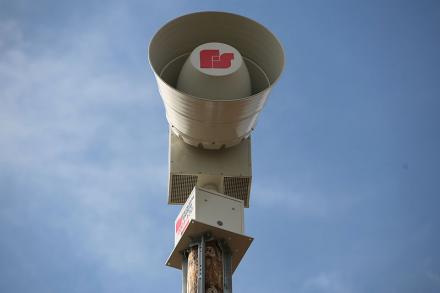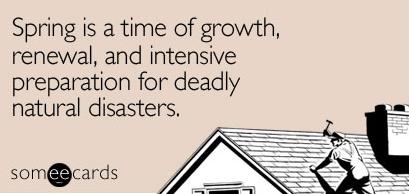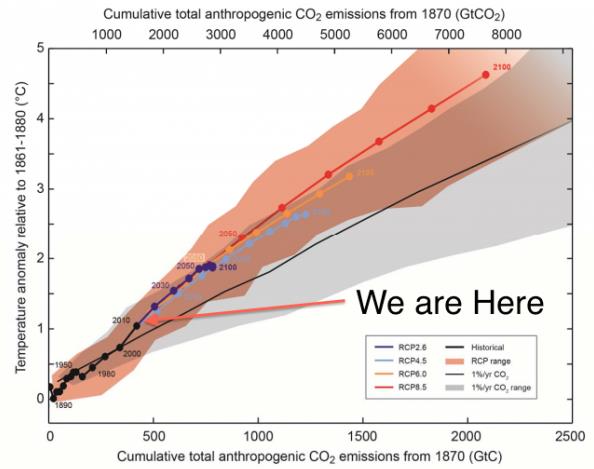53 F. maximum temperature yesterday in the Twin Cities.
51 F. average high on April 3.
68 F. high temperature on April 3, 2016.
April 4, 1928: Severe thunderstorms rumble through east central Minnesota. 100,000 dollars damage done at Anoka.
Stumbling Into Spring - Flash Flood Awareness
There is a fine line between stubbornness and stupidity as well as intensity and insanity” wrote Brittany Burgunder.
Maybe its in our DNA, but men seem more inclined to take stupid risks. NOAA data since 2010 shows that two thirds of all flooding fatalities were men. More than half of these deaths were related to driving through flooded roads. Apparently men, sitting up high in a pickup truck or SUV, are more inclined to believe they can make it to the other side.
The USA experienced 6 separate thousand-year floods in 2016, costing $17.5 billion and 148 deaths - far more than from tornadoes and hurricanes combined. Twisters and massive storms (with names) get most of the media attention, but flash floods are deadlier overall.
Skies brighten today; highs in the 50s until next weekend, when a stiff southerly breeze lures the mercury well into the 60s to near 70F. If you don't have The Fever yet, you will by Saturday afternoon.
Big, sloppy storms track south of Minnesota until next week, when rain becomes more widespread statewide.
No slush in sight. Don't laugh; a typical April brings 2.4 inches of snow.

No Rest For The Weary. What's impressive is the persistence of a high-frequency storm pattern; areas of low pressure spaced 24-36 hours apart, leaving little time for soil to dry out - ultimately increasing the risk of flooding as heavy rain falls on saturated ground. Today's storm pushes rain across the Northeast with a mix of snow, ice and rain for northern New England. Another storm spins up over the central Plains, pushing a shield of rain changing to snow across the Midwest, Ohio Valley and Great Lakes by Friday. Rain continues to soak the Pacific Northwest; the next chance of heavy rain for California coming Thursday night and Friday. 84-hour NAM Future Radar: NOAA and Tropicaltidbits.com.
Massive Flooding Hits Columbia. The Washington Post has details: "An
avalanche of water from three overflowing rivers swept through a small
city in Colombia while people slept, destroying homes, sweeping away
cars and killing at least 193 unsuspecting residents. The incident
triggered by intense rains happened around midnight in Mocoa, a
provincial capital of about 40,000 tucked between mountains near
Colombia’s southern border with Ecuador. Muddy water and debris quickly
surged through the city’s streets, toppling homes, ripping trees from
their roots and carrying them downstream. Many of the residents did not
have enough time to climb on top of their roofs or seek refuge on higher
ground. According to the Red Cross, 400 people were injured and 220
believed missing..."
Xenia (Ohio) Tornado Anniversary.
The Super Outbreak of April 3, 1974 was staggering in scope and
intensity; one of the reasons I ultimately became a meteorologist. The Xenia Gazette remembers that terrible day: "The
tornado injured 1,150 and destroyed approximately 1,400 buildings —
about half of those in Xenia. Nine schools, nine churches and almost 180
businesses were destroyed in the F5 tornado, which claimed more than 30
lives. The twister was part of the the 1974 Super Outbreak, which was
the second-largest tornado outbreak on record for a single 24-hour
period, just behind the 2011 Super Outbreak. It was also the most
violent tornado outbreak ever recorded, with 30 F4/F5 tornadoes
confirmed. From April 3 to April 4, 1974, there were 148 tornadoes
confirmed in 13 U.S. states and Ontario, Canada. Tornadoes struck
Illinois, Indiana, Michigan, Ohio, Kentucky, Tennessee, Alabama,
Mississippi, Georgia, North Carolina, Virginia, West Virginia and New
York. The entire outbreak caused more than $600 million (in 1974
dollars) in damage in the U.S. alone, and extensively damaged
approximately 900 square miles along a total combined path length of
2,600 miles according to online reports. At one point, as many as 15
separate tornadoes were ongoing at the same time..."
Photo credit: "Monday
was the 43rd anniversary of the 1974 Xenia tornado. The days and months
after April 3, 1974, tornado were filled with many scenes like the ones
you see here. The tornado injured 1,150 and destroyed some 1,400
buildings — about half of those in Xenia. Nine schools, nine churches
and almost 180 businesses were destroyed in the F5 tornado."

Vast, Untapped Potential for Solar Rooftops in the U.S., Says Google. Here's an excerpt of a post at Greentech Media that made me do a double-take: "...Now that Project Sunroof's availability is countrywide, Google’s amassed data has started to reveal some interesting trends and information. For one thing, Google says that 79 percent of the rooftops it’s analyzed are viable for solar, which is good news for rooftop solar providers. That doesn’t mean that 79 percent of rooftops should or will adopt solar, though. Rather, it means that 79 percent technically get enough sun to be able to accommodate solar panels. That finding is likely a generous interpretation of the data..."
Wind Power Cuts CO2. Here's an excerpt from Climate Central: "We’ve reached the end of the windiest month of the year. But in other months, wind will continue to play an increasingly large role in the U.S. power mix. At the end of last year, wind capacity surpassed hydroelectric capacity for the first time in the U.S. Over the past decade, wind power has exploded in the U.S. Over that time, generating capacity from wind has increased by a factor of seven, surpassing 82,000 megawatts, or enough to power 24 million homes. Wind is most consistent in the Great Plains and on the Front Range of the Rockies. The prevailing west winds come rushing off of the mountains, making the area especially conducive for generating electricity, as higher wind speeds produce disproportionately more power from a wind turbine..."

TODAY: Gray start, then slow clearing. Winds: N 8-13. High: 57
TUESDAY NIGHT: Partly cloudy. Low: 38
WEDNESDAY: More clouds than sun, dry. Winds: N 10-15. High: 54
THURSDAY: Sunshine on the increase, less wind. Winds: N 7-12. Wake-up: 35. high: 55
FRIDAY: Blue sky, milder breeze. Winds: S 8-13. Wake-up: 34. High: near 60
SATURDAY: Lukewarm sunshine feels good. Winds: S 10-20. Wake-up: 43. High: near 70
SUNDAY: Humid, few T-storms pop up. Winds: SW 10-15. Wake-up: 52. High: 67
MONDAY: Lingering showers, especially southern Minnesota. Winds: N 8-13. Wake-up: 48. High: 59
* photo credit: Josh Blash
Climate Stories...
The End of Winter May Signal Bigger Changes Ahead for Earth's Climate. An Op-Ed at USA TODAY captures the sense of disbelief that facts, data and evidence have become optional and politicized: "...We have no trouble believing that dinosaurs lived 150 million years ago, but who can even count back that far? We take it on faith that the continents drift around on tectonic plates like ice floes in a slush pond, but the ground feels pretty stable to me. Even though none of us can independently verify any of these things, most of us accept them as facts, not assertions. We recognize them as the settled conclusions of qualified experts who have studied the evidence carefully and ruled out every competing hypothesis. That’s what science does; it extends our reach and allows us to make connections, connect dots, that we couldn’t possibly link on our own. If we accepted only the evidence of our senses, we’d still think that the Earth was flat and the sun and stars revolved around us. When it comes to climate change, however, the Earth is still flat. Scientific facts have somehow become opinions, and carefully researched conclusions are written off as theories or even hoaxes. Climate scientists went to the same schools, earned the same degrees, and follow the same protocols as experts we wouldn’t begin to question on other matters, but millions of us find it easy to say, “I don’t think so....”
Image credit: Jeff Williams, NASA.

Climate Change Doesn't Care Who You Voted For. Here's a clip from Teen Vogue. What, you don't read Teen Vogue? "...Climate change denial has been able to flourish because it papers over a painful reality. It’s hard to reconcile the scope of danger with the sense that there is nothing we can do about it, but political inefficacy is just another myth in need of rejection. We must come together to insist on the reduction of greenhouse-gas emissions via federal effort. Each passing day in this DEFCON 1 political climate, it seems less and less possible to bridge the party divide, but we can all be united by the need for clean air, fresh water, and a better world for our children. As it stands, Trump’s climate change policy puts all of those things at risk, and unfortunately floods and droughts don’t give a crap whom you voted for."
As the Maldives Gains Tourists, It's Losing Its Beaches. The New York Times reports.

Photo credit: "President Donald Trump shakes hands with Michael Nelson, a coal miner, early in February." Carlos Barria / Reuters.
Even Fox News Slams EPA Chief's Climate Denial: "All Kinds of Studies Contradict You". Kudos to Chris Wallace for drilling down and challenging the new EPA Administrator, as reported at ThinkProgress: "Even
Fox News can’t believe that the head of the Environmental Protection
Agency, Scott Pruitt, doesn’t accept the basic scientific finding that
carbon dioxide is a primary contributor to recent global warming. To
promote President Trump’s disastrous plan to gut EPA and U.S. climate
action, Pruitt has been pushing his dangerous beliefs on all the major
networks. Pruitt may have thought the Murdoch-owned network that has led
the way on attacking climate science for two decades would be a
friendly audience. He was wrong. Fox News Sunday
anchor Chris Wallace thoroughly debunked Pruitt for defending his
absurd claim that CO2 is not “a primary contributor to the global
warming that we see...”
MIT Climate Scientist Responds on Disaster Costs and Climate Change. Here's an excerpt from FiveThirtyEight: "...Looking
ahead, I collaborated with Yale economist Robert Mendelsohn and his
colleagues in estimating global hurricane damage changes through the
year 2100, based on hurricanes “downscaled” from four climate models. We
estimate that global hurricane damage will about double owing to
demographic trends, and double again because of climate change. These
projections are not inconsistent with what we’ve been seeing in
hurricane data and in economic damage from hurricanes. Besides this
study, there are robust theory and modeling results that show increased
risk of hydrological extremes (floods and droughts) and heat-related
problems. Some of these predicted trends are beginning to emerge in
actuarial data. Governments, markets and ordinary people are beginning
to account for the increased risk. Those who wait for actuarial trends
to emerge at the 95 percent confidence level before acting do so at
their peril." (Hurricane Joaquin file image: NASA).
No comments:
Post a Comment